This ube milk bread combines Hokkaido milk bread dough with dehydrated ube purple yam powder to create a soft and fluffy colorful loaf!
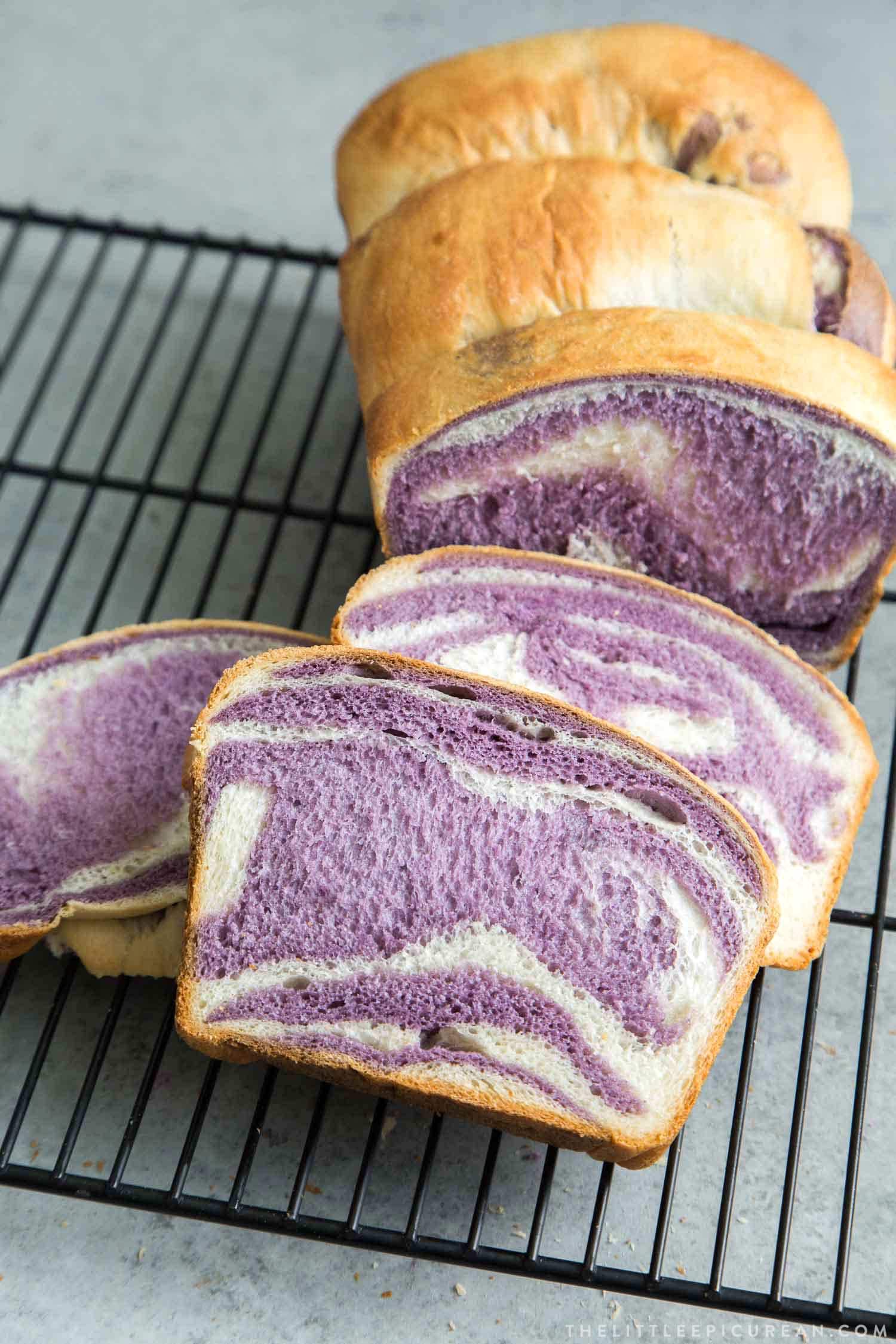
Since 2015, this Japanese Milk Bread has consistently been one of the most popular recipe posts on my site.
After making it dozens of times, I’ve opted to create a new milk bread variation!
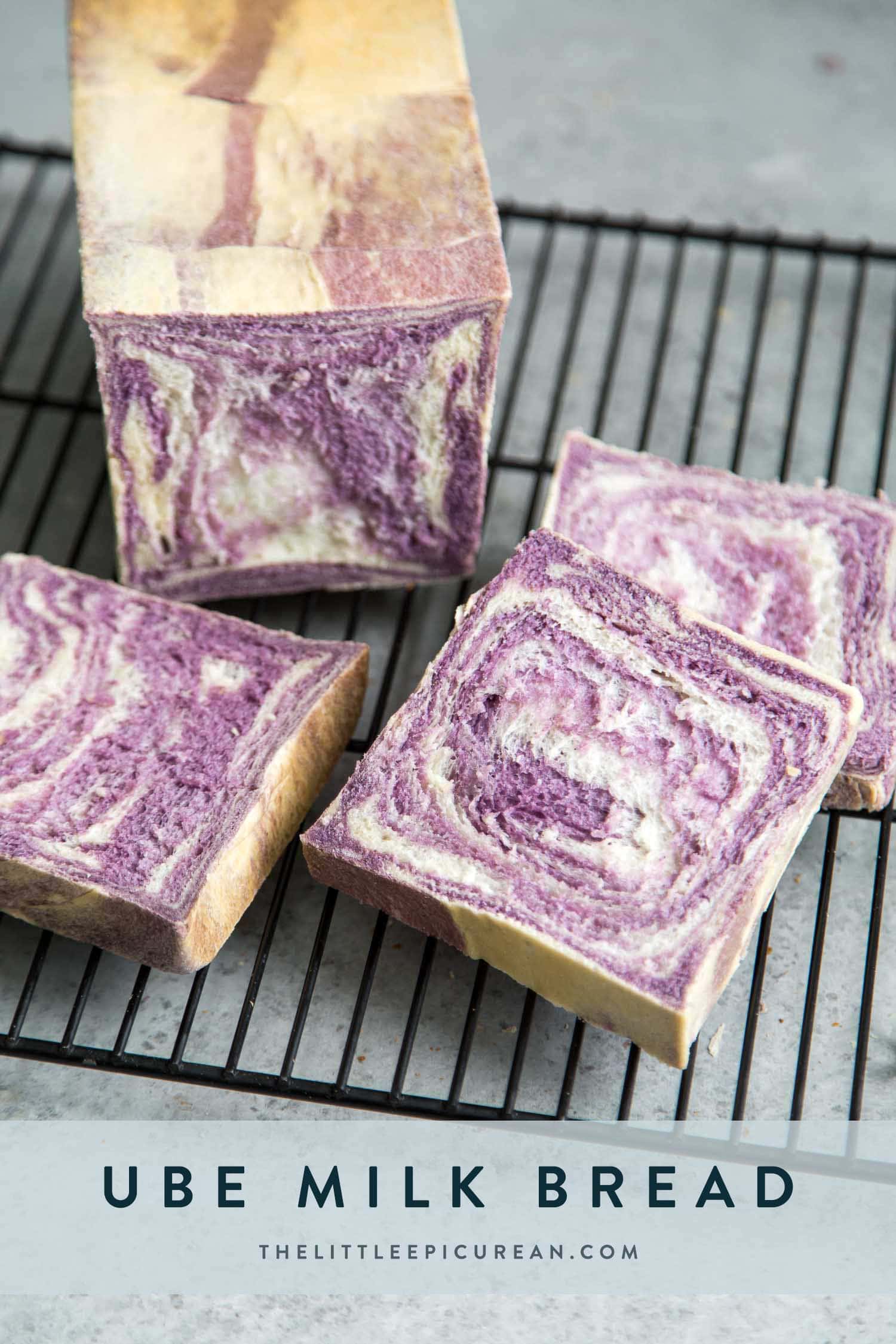
Ube Milk Bread
The increasing popularity of Filipino cuisine has catapulted ube into the mainstream. This ube milk bread combines the soft and fluffy characteristics of Japanese milk bread with the visually striking color of purple yam.
While the bread itself doesn’t have a powerful ube flavor, I suggest serving a slice of this bread toasted with some ube halaya for the ultimate ube experience!
![]()
What is Ube?
It is a purple yam native to Southeast Asia. This unique yam is a very popular tuber in the Philippines. It is widely used in desserts, especially ice cream.
Ube is pronounced “ooo-bae.” The “ooo” sounding like what kids say when another kid is called upon to visit the principal’s office.
Do not confuse ube with taro or Okinawan sweet potato. They’re not the same, despite the shades of purple color they share.
Taro is called gabi in Tagalog. Like ube, it is commonly used in Filipino cuisine. While purple yam is a relative of sweet potato, they’re not the same tuber.
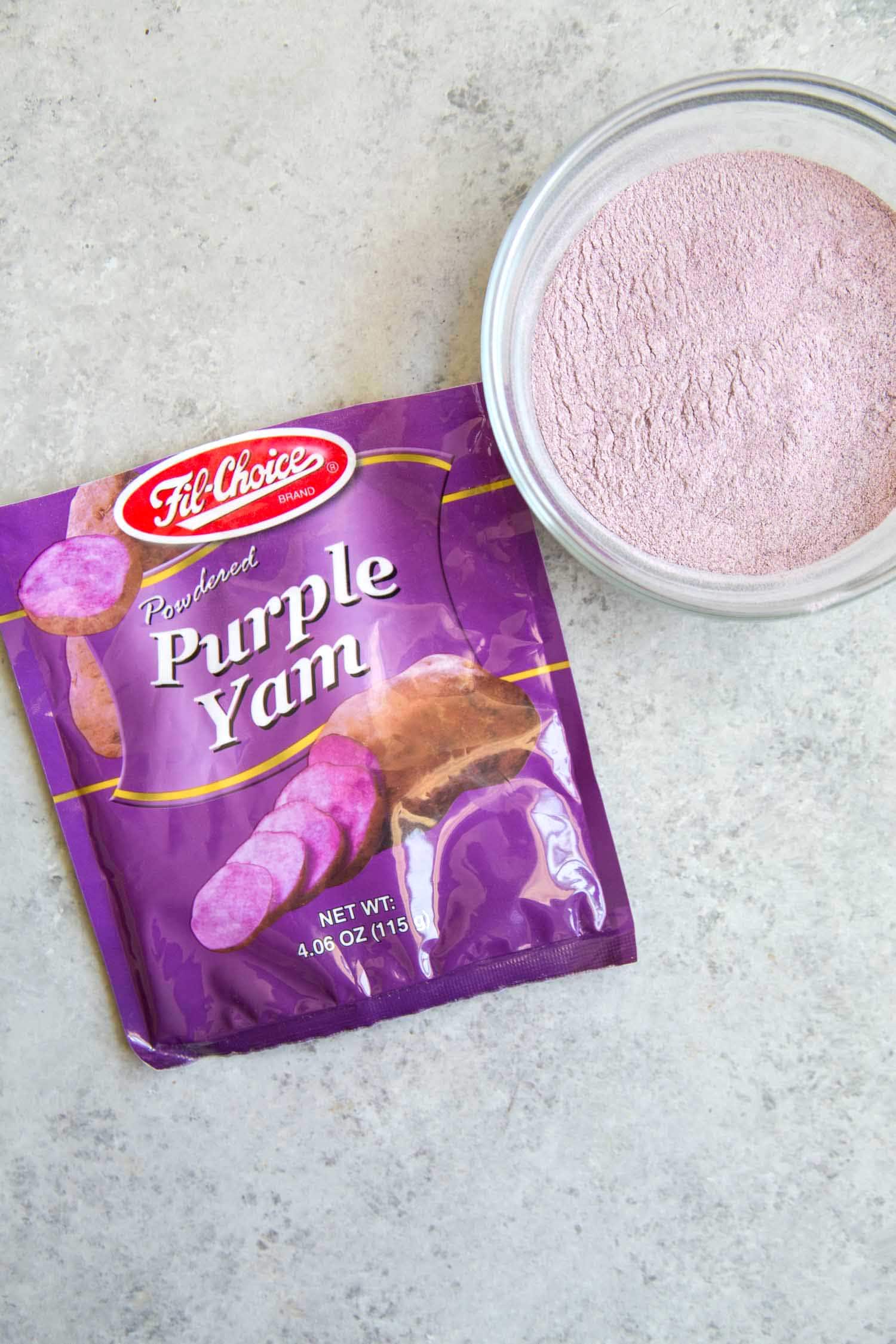
Where is ube grown?
Ube is natively grown in Southeast Asia, but it’s cultivation has spread further to include Africa, India, and parts of South America.
However, ube is still very difficult to find fresh in the United States. Luckily, there are many other ube options available.
Ingredients
From my experience, powdered purple yam is the easiest to find and use. There are a variety of brands to choose from. I recommend the Fil-Choice brand photographed above.
Powdered purple yam is simply dehydrated purple yam. Make sure you purchase the package that is 100% pure purple yam. Some varieties include powdered milk or sugar.
Frozen ube is another option. It is sold grated, shredded, mashed, or whole.
Both powdered and frozen ube can be found at well stocked Asian Supermarkets.
However, you will have the most luck at a Filipino market like Seafood City or Island Pacific Supermarket. The powdered ube is usually stocked alongside other baking ingredients like flour, chocolate, and extracts.
NOTE: And if all else fails, powdered ube is sold on Amazon. I purchased mine in store at Seafood City for about $4. I’ve seen prices range from $3.50-$5. Don’t spend more than $6 per four ounce bag. It’s not worth it.
What does ube taste like?
On it’s own, ube tastes rather bland. The flavor we have come to associate with ube is the sweetened version.
After being boiled or baked, purple yam is sweetened with sugar or condensed milk. As such, it takes on toasted coconut-like flavor.
What does ube milk bread taste like?
Sorry to disappoint you, but this ube milk bread won’t be full of “ube flavor.” In order to develop that distinct flavor, you need a ton of sugar, or an excessive amount of ube extract flavoring.
Instead, this bread tastes like my Japanese milk bread with a touch of ube. To fully immerse yourself with ube, I suggest serving this ube milk bread as toast with a generous amount of ube halaya.
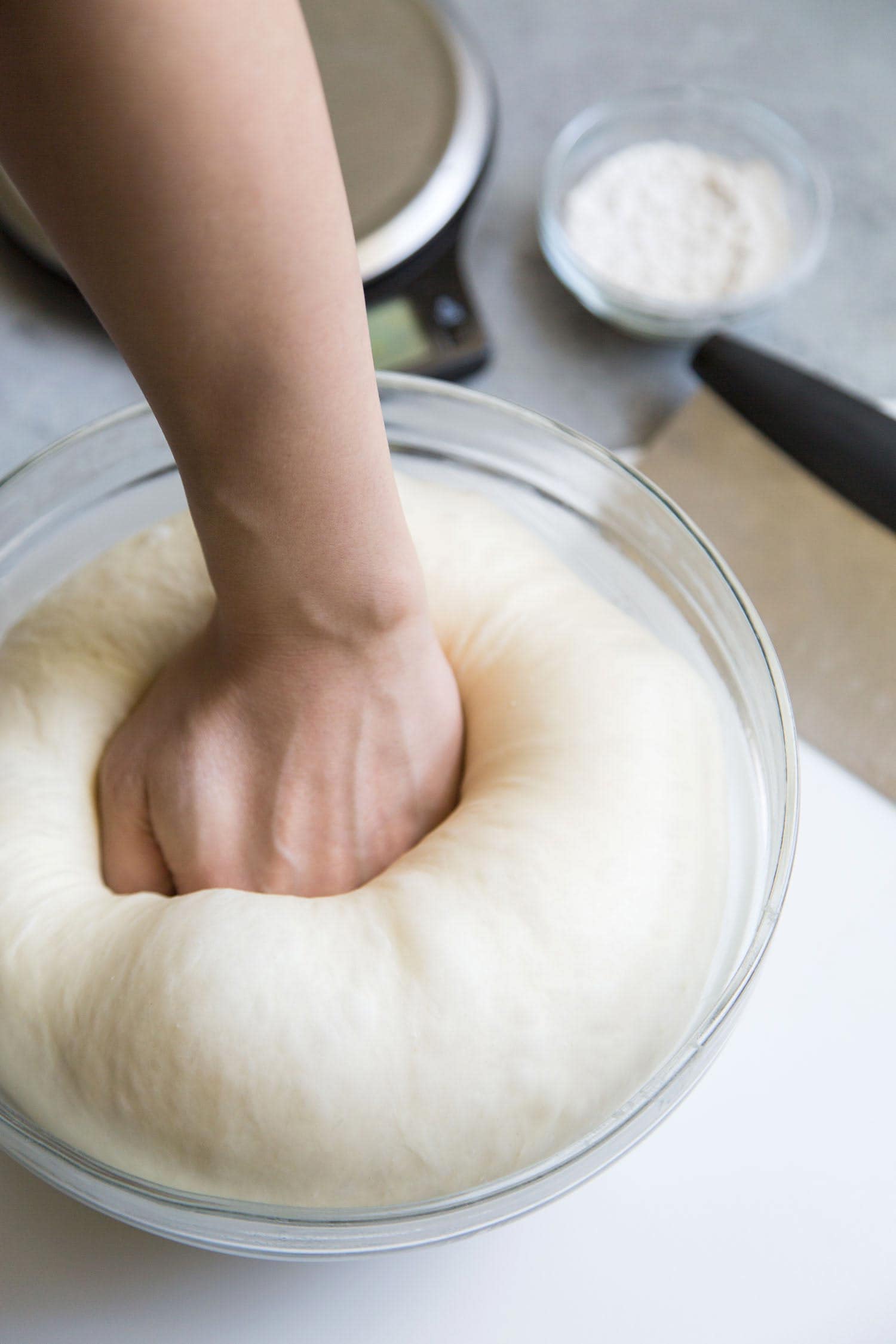
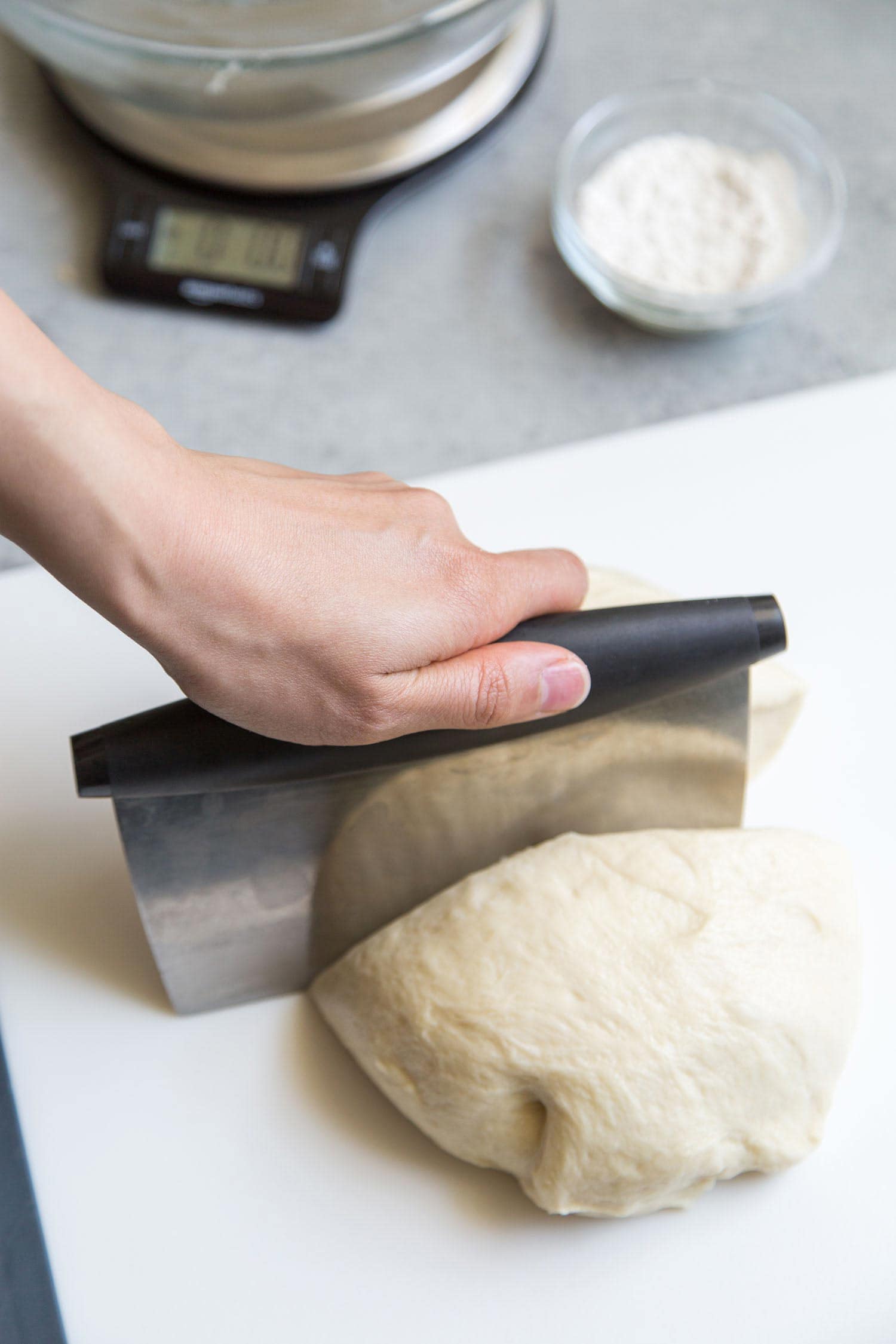
Essential Bread Tools
Bread doughs can be knead together by hand the old fashioned way. This recipe can be done without a stand mixer. However, the three tools, I highly recommend for bread baking are:
- kitchen scale
- dough scraper or bench scraper
- digital instant read thermometer
Kitchen Scale:
A kitchen scale is very important when making breads. It ensures even, equal portions.
No need to splurge on a fancy scale with all the bells and whistles. I’ve been using this basic $10 digital kitchen scale from Amazon for the past three years without any problems.
Bench Scraper:
This tool becomes super helpful when working with very wet doughs like ciabatta. Overtime, the bench scraper becomes an extension of your arm.
The bench scraper is used for a variety of purposes including: portioning bread dough, dividing pie dough and cookie dough, or slicing butter.
Digital Instant Read Thermometer:
When it comes to working with bread dough, temperature is VERY important. Not just the temperature of the oven, but the temperature of the ingredients as well as the temperature of the working environment.
This is my favorite digital instant read thermometer. It’s a little pricey, but so helpful in the kitchen.
Asides from breads, use the thermometer to cook meats to the perfect temperature.
Milk Bread Dough Starter:
This recipe requires the mixing of two different doughs: the standard milk bread dough (cream colored) and the ube milk bread dough (purple colored).
Milk bread gets its iconic fluffy texture from the use of a dough starter, also known as a water roux.
The dough starter is a mixture of flour, milk, and water heated together to a form a thick paste.
Once cooled, this paste is mixed with the remaining dough ingredients to create an easy to work with, very forgiving dough.
Assembly Instructions
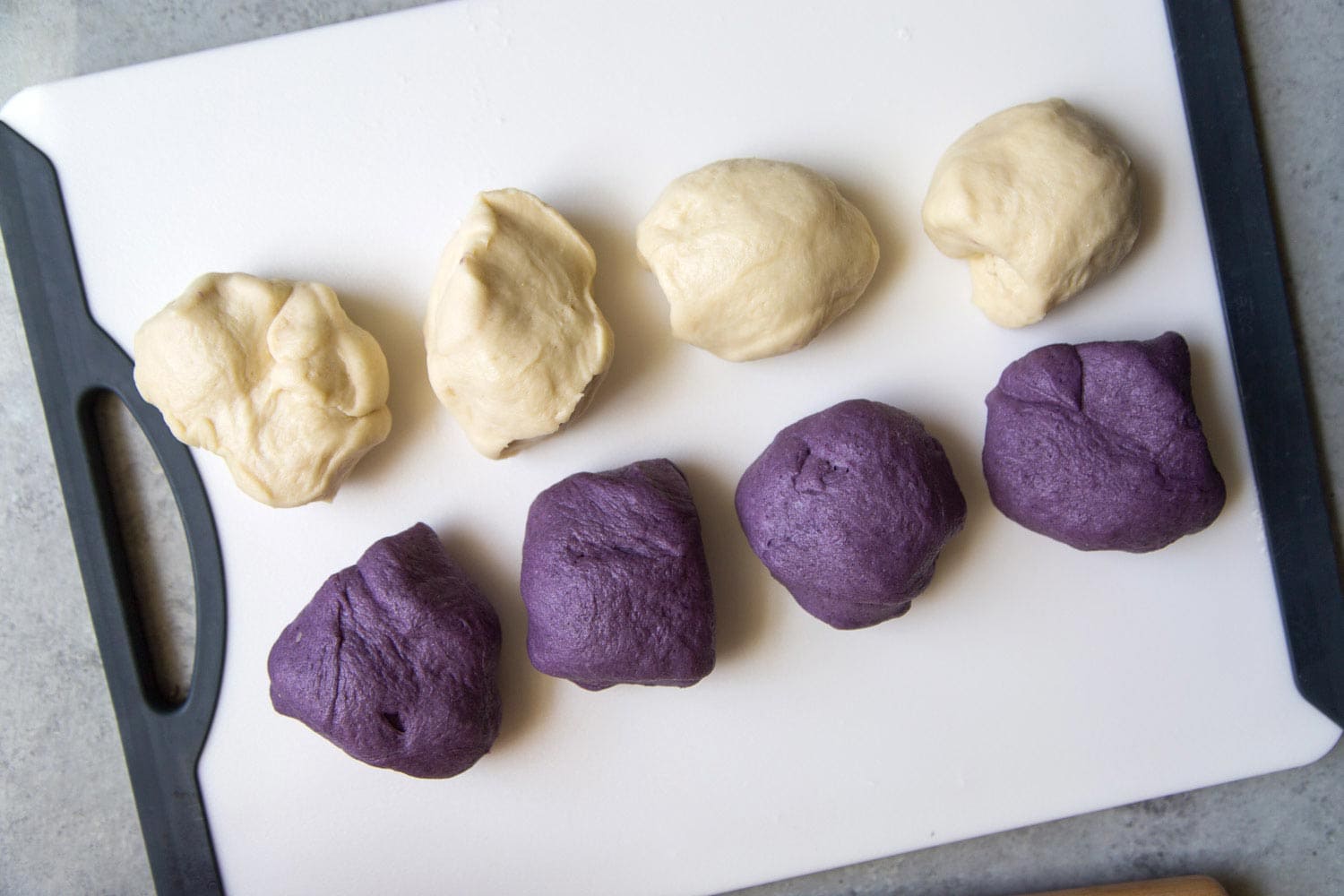
Allow the two doughs to rest and rise. Divide each colored dough into eight equal parts. (This is where a kitchen scale comes handy!)
Remember, this recipe will make two 9×5-inch loafs. Each loaf will have 4 cream colored doughs and 4 purple colored doughs.
It is vital to keep the cut dough covered with plastic wrap to prevent it from drying out.
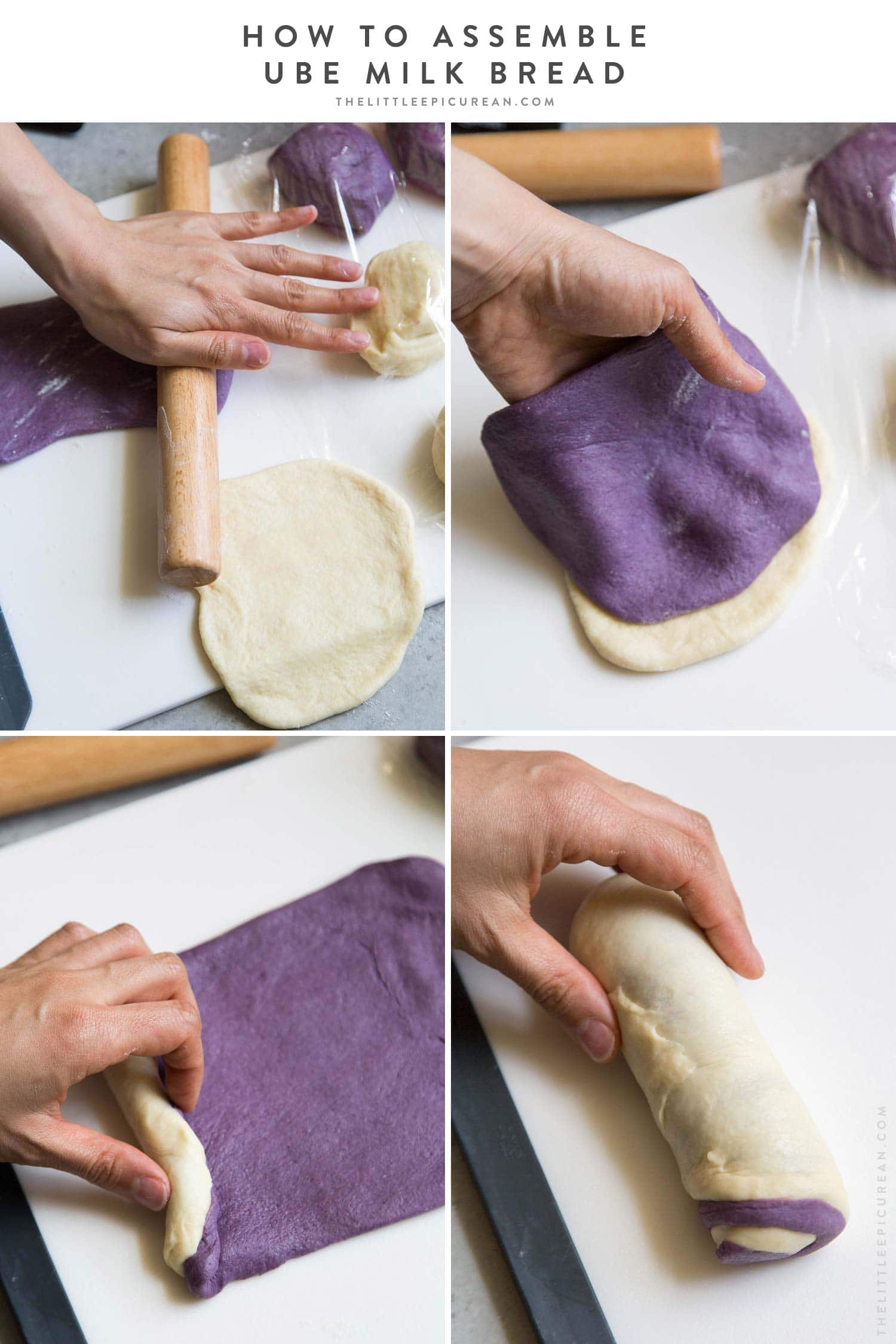
- Working with one ball of dough a time, flatter or roll dough to a length of about 8 inches and width of 5 inches.
- Place the rolled purple dough over the rolled cream dough.
- Starting from the shorter end, roll the dough into a log. Place into a greased loaf pan and cover with plastic wrap.
Repeat process of rolling logs with remaining dough balls.
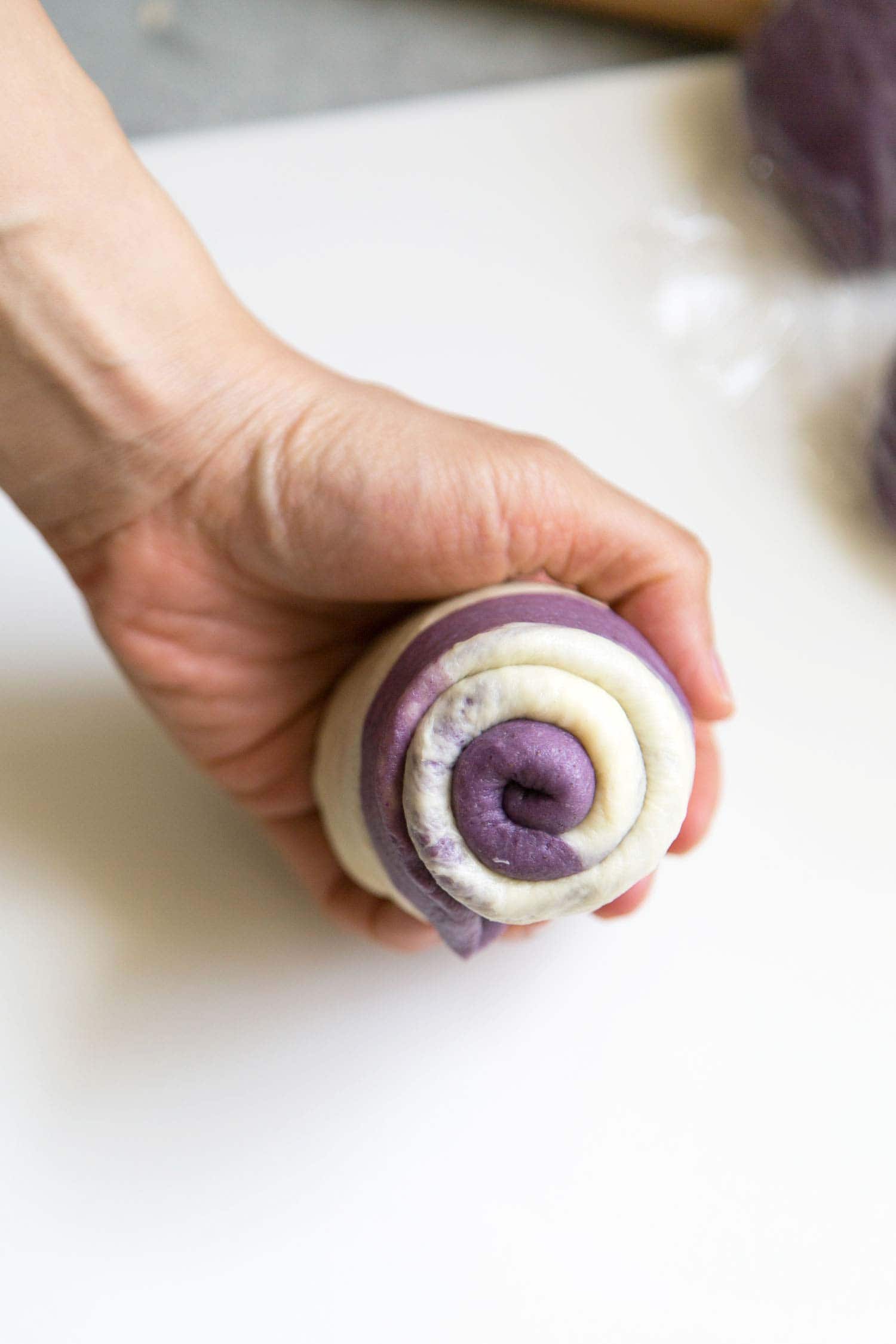
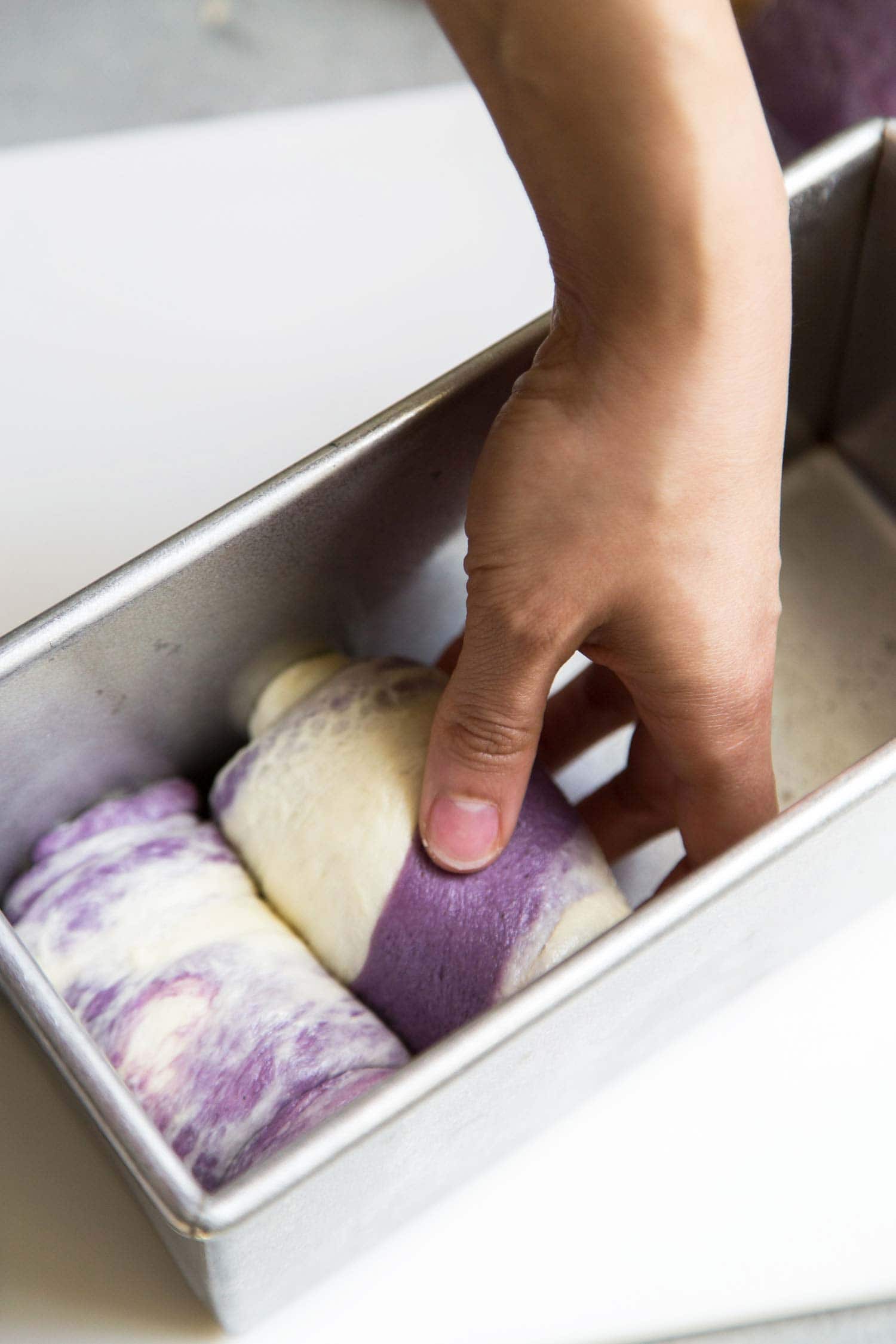
NOTE: I used a different rolling technique for the pullman loaf to achieve a more marbled effect. See recipe notes for details.
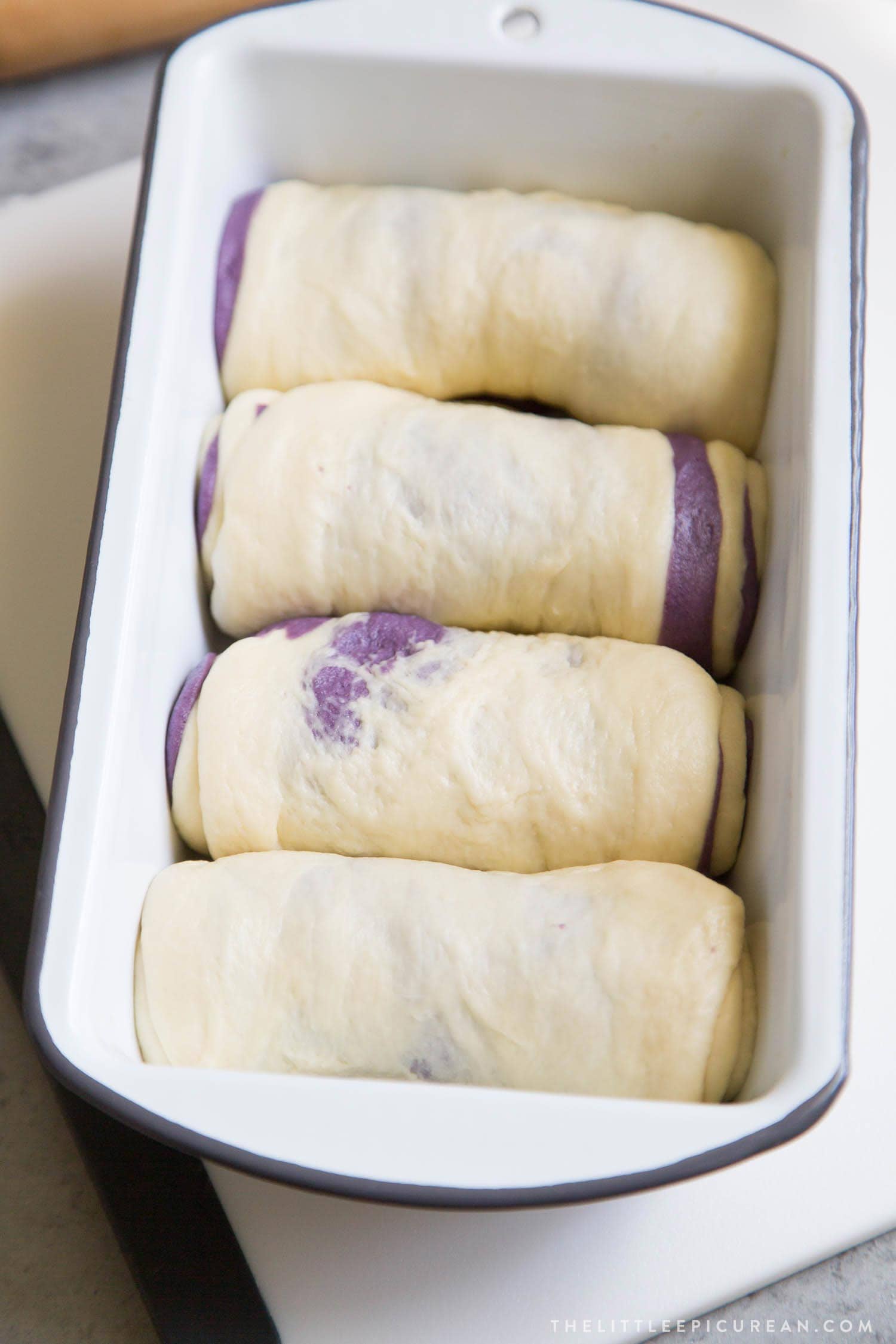
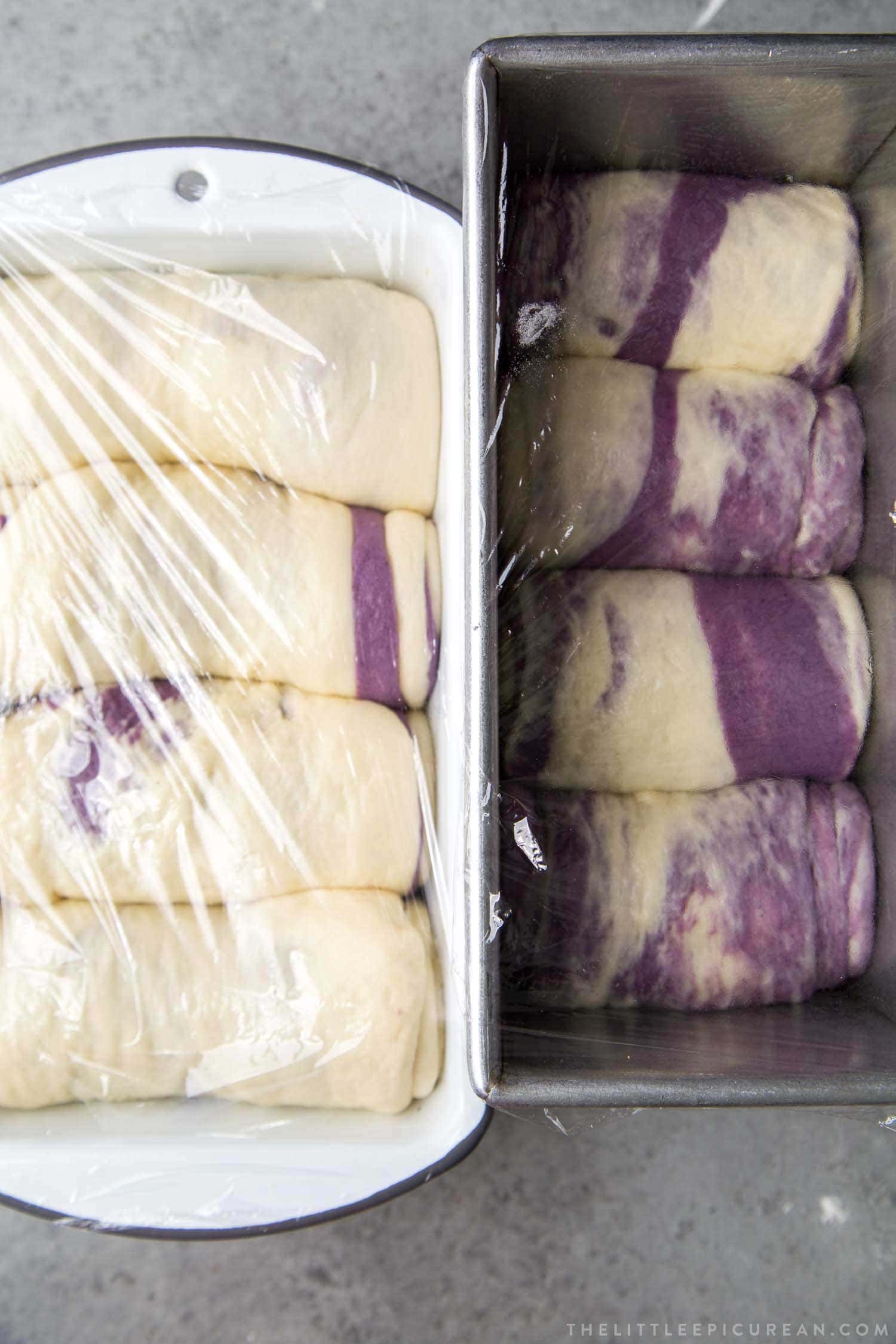
Standard Loaf Pan vs Pullman Loaf Pan
As noted above, I used a different rolling and folding technique for the pullman bread loaf. This results in a more marbled effect. See recipe notes for details.*
The standard loaf pan is on the left side of the image. It is the pan normally used for quick breads like banana bread.
Pullman loaf pan is different because it has a lid. This pan is known by many names including: pain de mie (crumb bread), pain anglais (English bread), or sandwich loaf pan.
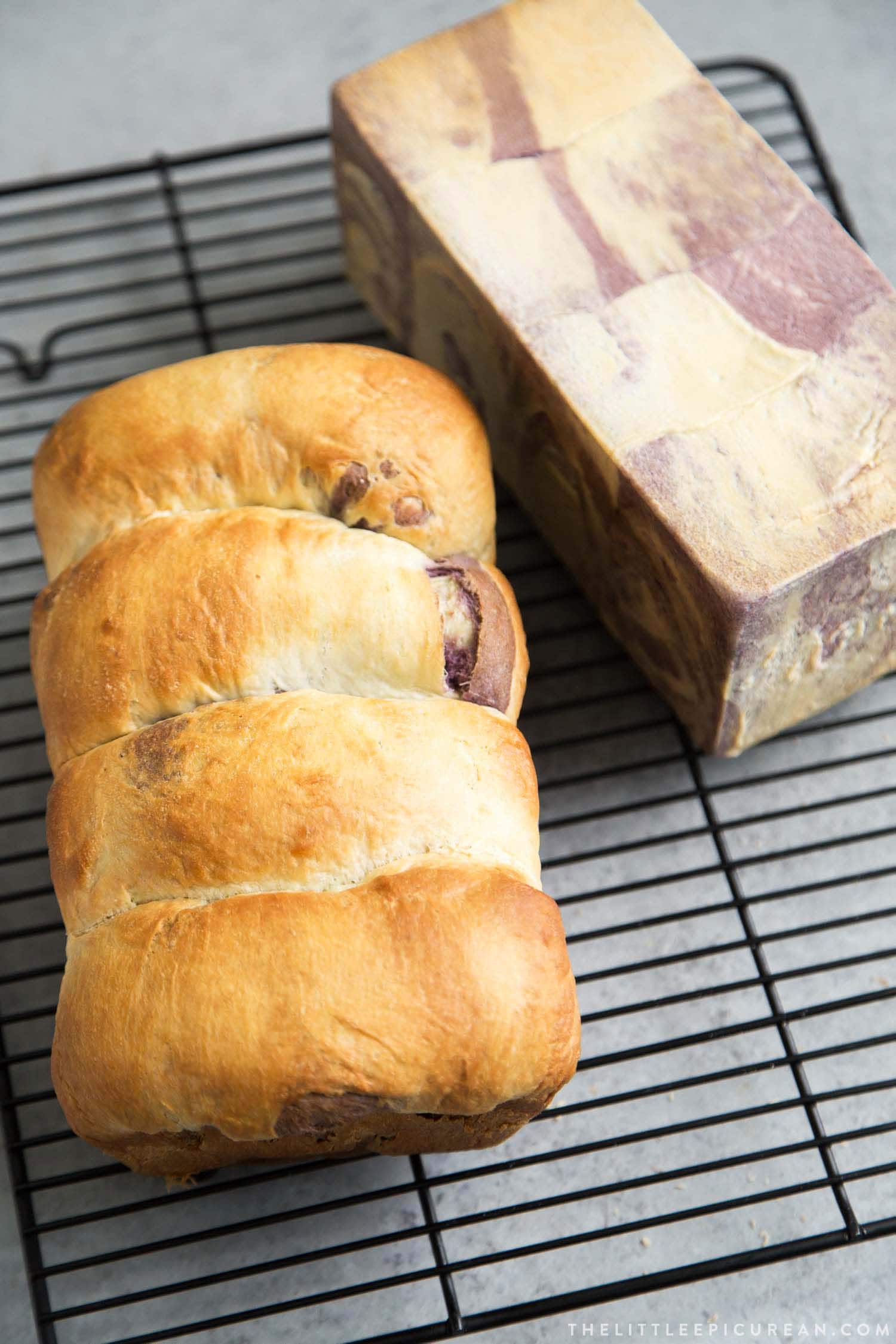
Either type of loaf pan works wonderfully in this recipe. It just depends on what shape you want to achieve.
The standard loaf pan will create a tall loaf with peaks and valleys. While the pullman loaf pan will create a straight-edged rectangular block.
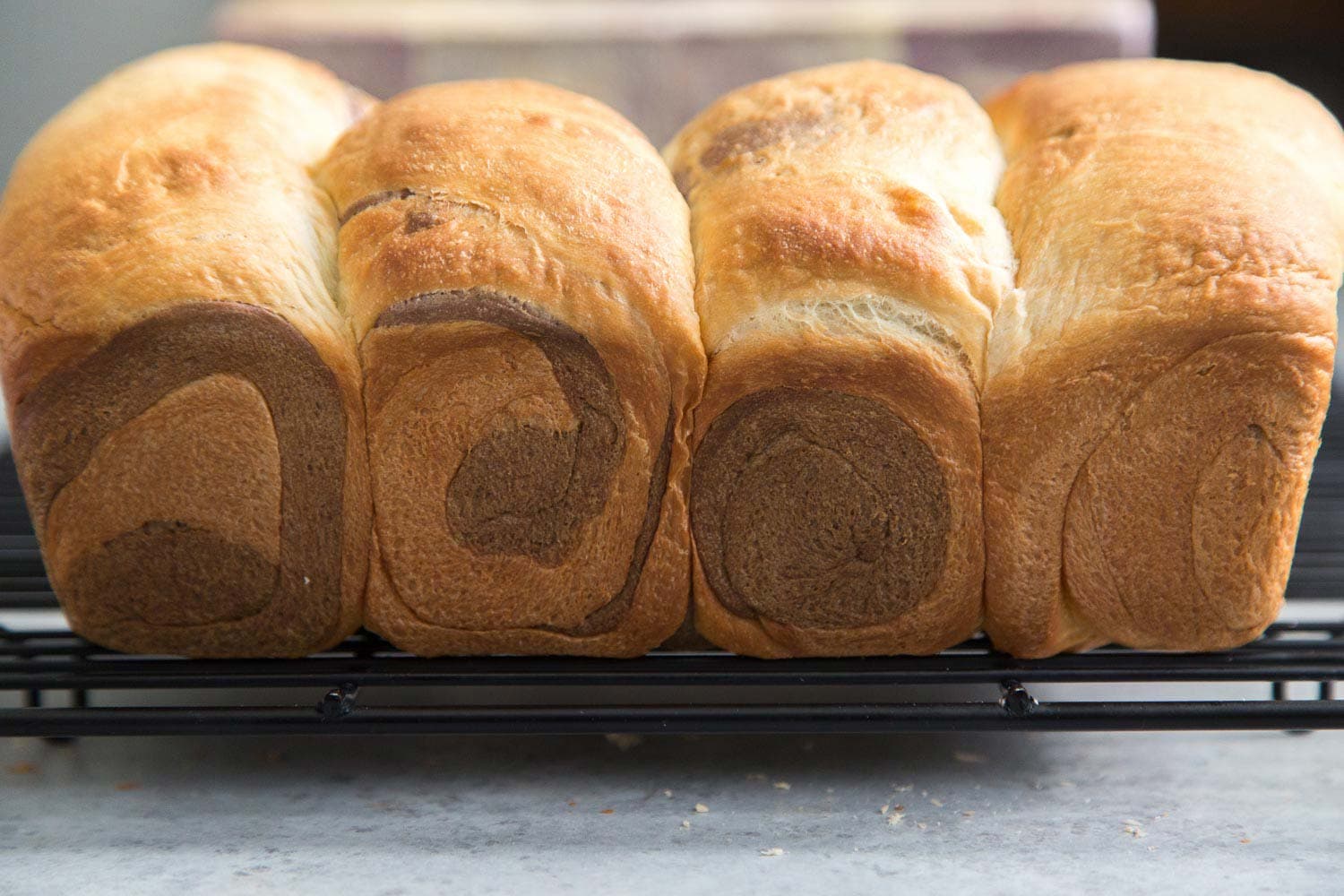
Just like my Japanese milk bread, this ube milk bread will remain soft and fluffy days after baking!
Enjoy one loaf for yourself and the give the other loaf away. Or, for later enjoyment, wrap the second loaf in plastic wrap and store in the freezer for up to one month.
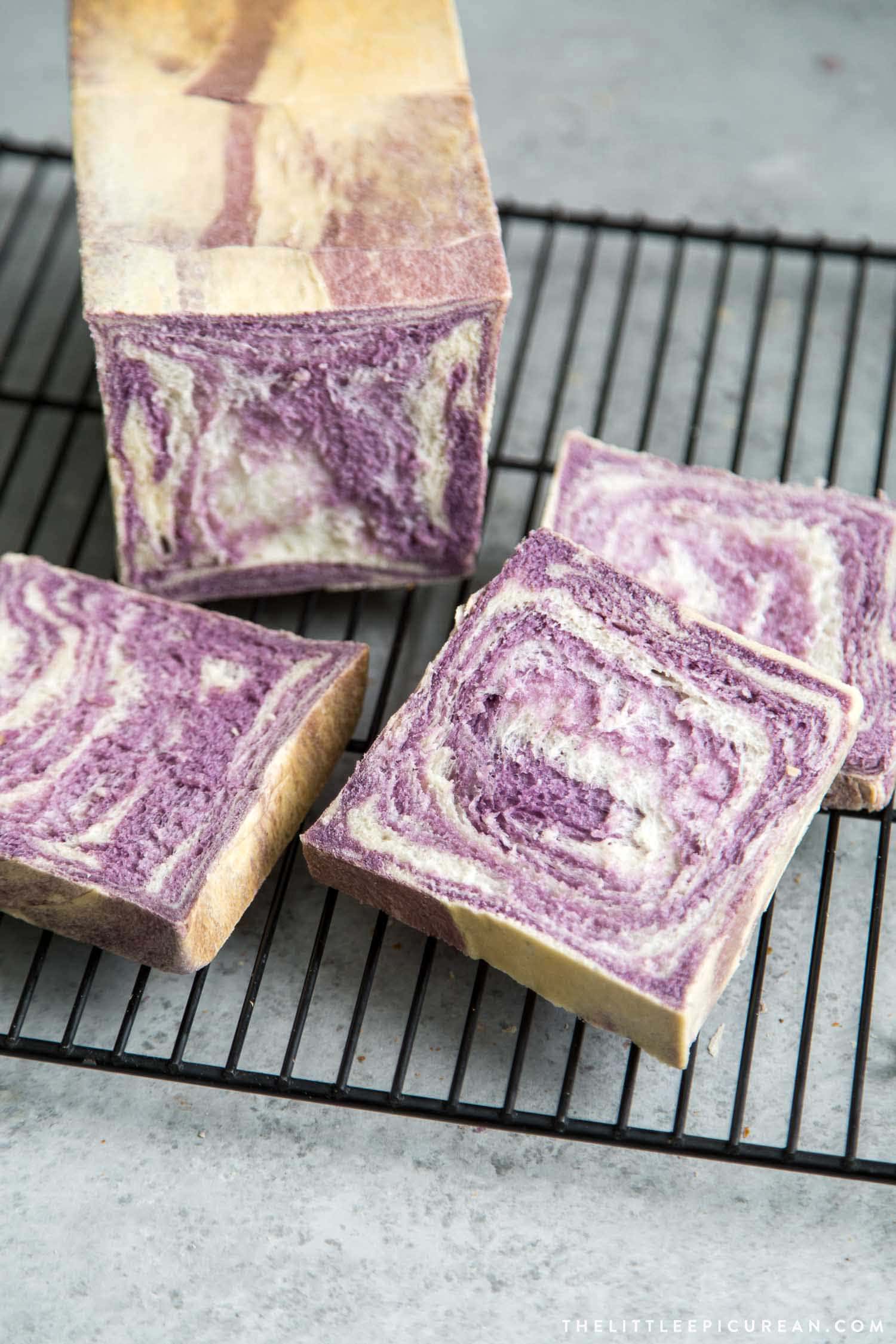
Ube Milk Bread
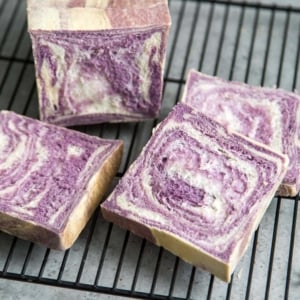
Ingredients
Starter:
- ⅓ cup all-purpose flour,, (45 g) or bread flour
- ½ cup (120 ml) whole milk, (120 ml)
- ½ cup water, (120 ml)
Dough:
- 2 ½ cup bread flour, (325 g)
- ¼ cup granulated sugar, (60 g)
- 2 ¼ teaspoon dry active yeast, (7 g)
- 1 Tablespoon milk powder*
- 1 teaspoon kosher salt
- 1 large egg,, whisked
- ½ cup whole milk, (120 ml)
- ¼ cup unsalted butter, , (60 g)softened
Ube Dough:
- 2 cup bread flour, (260 g)
- 1 package ube powder, (115 g)
- ⅓ cup granulated sugar, (70 g)
- 2 ¼ teaspoon dry active yeast, (7 g)
- 2 Tablespoon milk powder*
- 1 teaspoon kosher salt
- 1 large egg, , whisked
- ½ cup + 2 Tablespoon whole milk, (150 ml)
- 1 ½ teaspoon ube extract
- ¼ cup unsalted butter,, (60 g) softened
Instructions
Starter:
- In a medium pot, whisk together flour, milk, and water. Set over medium heat. Stir often, making sure to pay attention to the bottom edges of the pot. Cook for about 5 minutes, until the mixture has thickened to the consistency of mashed potatoes.
- Remove from heat and transfer to a bowl. Cover with plastic wrap, allow wrap to lay directly on top of starter mixture. Allow to cool to room temperature.
Dough:
- In the bowl of a stand mixer, whisk together bread flour, sugar, yeast, milk powder and salt. Attach dough hook to mixer. Add in half of cooled starter mixture (about ½ cup), egg, and milk. Knead on low speed for 5 minutes. Scape down bowl to ensure thorough mixing.
- Add softened butter and continue to knead on low speed for 5 minutes until butter is integrated into dough. Increase speed to medium and knead for another 5 minutes until dough is smooth and pulls away from the sides of the bowl.
- Transfer dough to a lightly greased bowl. Cover with plastic wrap and let rest for 1 hour, or until dough is doubled in volume. Meanwhile, make ube dough.
Ube Dough:
- In the bowl of a stand mixer, whisk together bread flour, ube powder, sugar, yeast, milk powder and salt. Attach dough hook to mixer. Add in ½ cup of cooled starter mixture, egg, milk, and ube extract. Knead on low speed for 5 minutes. Scape down bowl to ensure thorough mixing.
- Add softened butter and continue to knead on low speed for 5 minutes until butter is integrated into dough. Increase speed to medium and knead for another 5 minutes until dough is smooth and pulls away from the sides of the bowl.
- Transfer dough to a lightly greased bowl. Cover with plastic wrap and let rest for 1 hour, or until dough is doubled in volume.
Assembly:
- Grease two 9×4 or 9×5 inch loaf pans or pullman loaf pans. If desired, line with parchment paper for easy bread removal. Set aside.
- Work with cream colored dough first. Punch down risen dough. Transfer to a lightly floured work surface. Divide dough into 8 equal parts. (Use a bench scraper and kitchen scale for ease and accuracy.) Roll each part into a ball. Cover dough with plastic wrap as you work to prevent dough from drying out or forming a skin.
- Next, work with purple colored (ube) dough. Punch down risen dough. Transfer to a lightly floured work surface. Divide dough into 8 equal parts. (Use a bench scraper and kitchen scale for ease and accuracy.) Roll each part into a ball. Cover dough with plastic wrap as you work to prevent dough from drying out or forming a skin.
- Grab one cream colored dough ball. Flatten or roll out dough to a length of about 8-inches and 5-inches wide. Grab a purple colored ball and repeat rolling. Place purple dough over cream dough. Starting at the shorter end, roll dough into a log.
- Place log seam side down into prepared loaf pan. Repeat process until loaf pan has a total of four logs. Cover loaf pan with plastic wrap and let rest for 30-45 minutes at room temperature until dough has doubled in volume and. Meanwhile, preheat oven to 350°F.
- Repeat this process with the remaining balls of dough. See notes for instructions on how to make the marbled dough for pullman loaf pan.*
- Remove plastic wrap. Lightly brush the top of the dough with heavy cream. Bake in preheated oven for 35-40 minutes until the top of the bread loaf is golden brown and the internal temperature of the bread is at least 190°F. Be sure to rotate bread midway through baking for even coking.
- Let bread cool in pan for 5 minutes. Unmold bread from pan and allow to cool to room temperature on wire rack. Once cool, slice bread using serrated knife.
Notes
- Non fat dry milk powder provides additional flavor. It is optional and may be omitted. Milk powder is found in the baking aisle of the supermarket along with the flours. It is also labeled as “instant dry milk.”
- Ube powder or dehydrated purple yam can be found at Filipino supermarkets. It is also available on Amazon. Make sure to use 100% purple yam. Some varieties include powdered milk and/or sugar.
- Ube extract can be found at Filipino supermarkets or online through various retailers. It provides ube flavor and a strong purple color. Be careful with this extract. It stains!
Nutrition
Nutrition information is automatically calculated, so should only be used as an approximation.
 Like this recipe? Rate & comment below!
Like this recipe? Rate & comment below!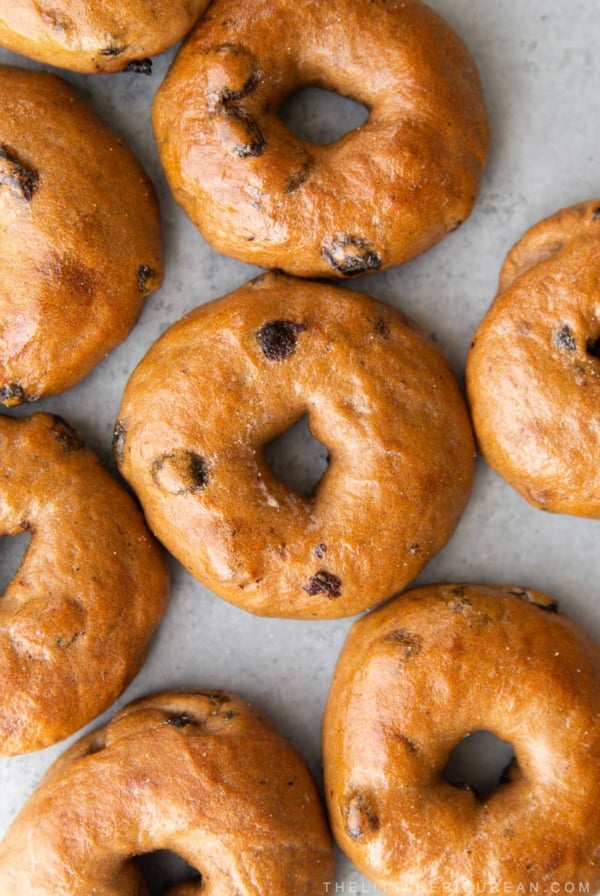
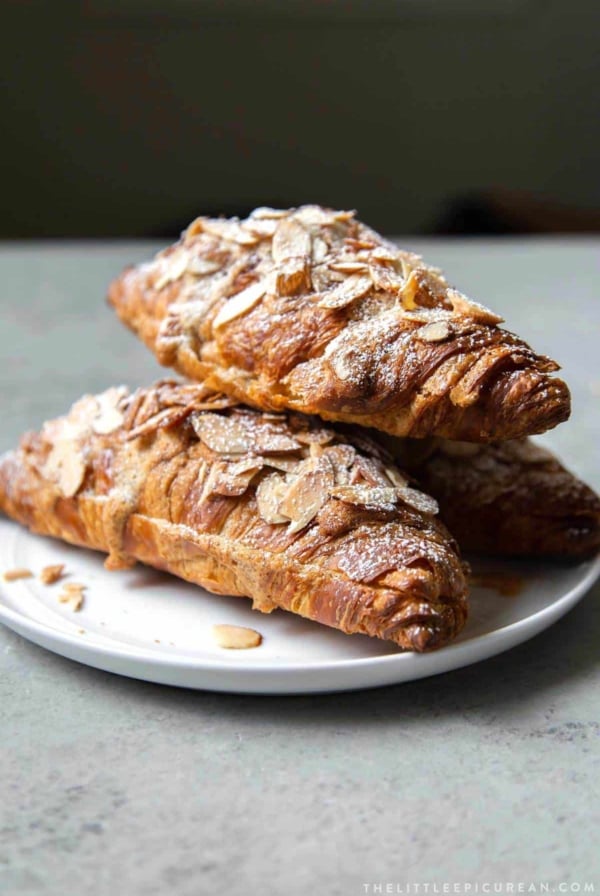
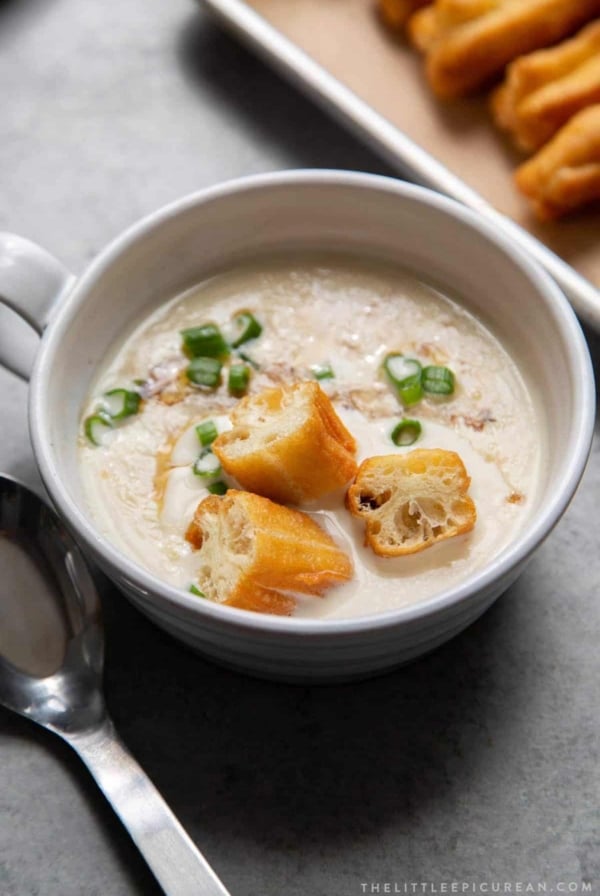
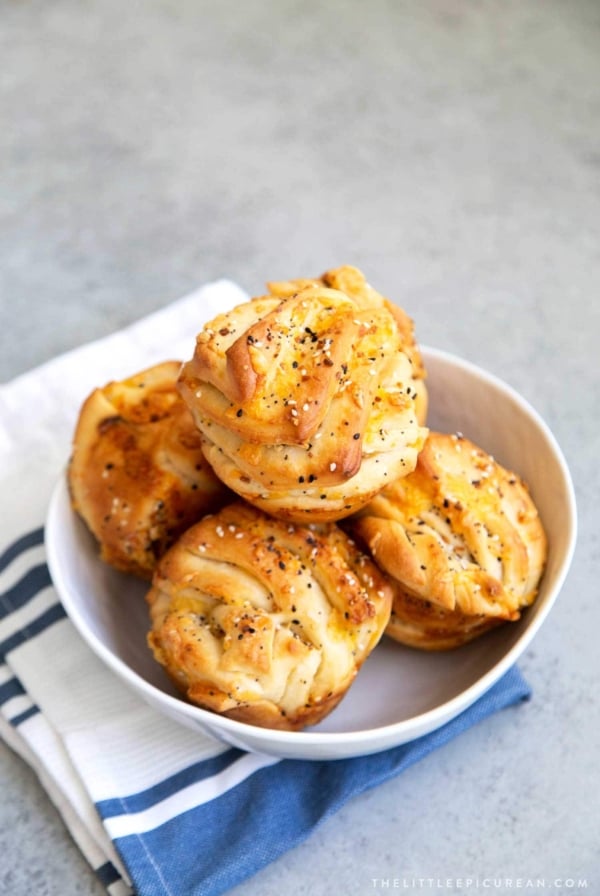





Ooo i can’t have eggs or milk..but really want to try this recipe! Do you think unsweetened soy milk will work as a milk sub? For egg…maybe aquafaba????
Turned out great but looks different
How does it look different? The purple coloring may be different depending on the brand of powdered purple yam you use. The coloring may also vary depending on how much ube extract you use.
What would be a good bake time if I only baked 1 roll, as I have a mini pan which can fit 1 of 8.
Can I use ube halaya instead and how much should I put? Measured in grams.
No, unfortunately there is too much moisture in ube halaya. This recipe requires powdered ube.
How do you substitute frozen grated purple yam?
I have not tested this recipe using grated purple yam.
I have ube halaya. How much should I use to substitute for ube powder?
Is it possible to knead it by hand if I don’t have a stand mixer?
Yes, you can knead the dough by hand. It will take a bit longer. But, knead the dough until smooth and elastic.
I baked this bread and it was so good! It was very soft inside and my kids loved it. I was a little hesitant with the active dry yeast because I didn’t proof it before mixing with the dry ingredients like I usually do with my pandesal. The only thing I changed in the ingredients is the milk powder. I have buttermilk powder at home and used that instead. The bread still came out soft. Will definitely bake it again. Thank you!
Thank you for trying the recipe! So happy you and your family enjoyed it! Nice touch using the buttermilk powder.